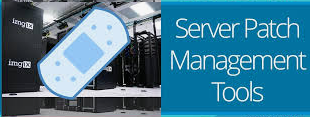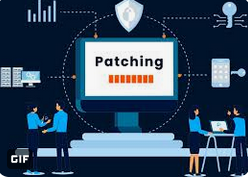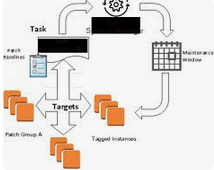Introduction
In today’s rapidly evolving digital landscape, maintaining the security and performance of your server infrastructure is paramount. One of the most critical aspects of this maintenance is the implementation of robust server patch management tools. These essential software solutions play a vital role in keeping your servers up-to-date, secure, and operating at peak efficiency.
Server patch management tools are specialized software applications designed to automate and streamline the process of identifying, downloading, testing, and applying patches to server operating systems and applications. These patches, which can include security updates, bug fixes, and feature enhancements, are crucial for maintaining the integrity and functionality of your server environment.
The importance of effective patch management cannot be overstated. With cyber threats becoming increasingly sophisticated and prevalent, unpatched vulnerabilities in server systems can serve as open doors for malicious actors. Furthermore, outdated software can lead to performance issues, compatibility problems, and potential system failures. By leveraging server patch management tools, organizations can significantly reduce these risks and ensure their server infrastructure remains robust and secure.
In this comprehensive guide, we’ll delve deep into the world of server patch management tools, exploring their features, benefits, and best practices for implementation. Whether you’re an IT professional looking to optimize your patch management strategy or a business owner seeking to understand the importance of these tools, this article will provide you with valuable insights and practical knowledge.
Understanding Server Patch Management
What is Server Patch Management?
Server patch management is the systematic process of acquiring, testing, and installing updates (patches) for software applications and systems on servers. This process is critical for maintaining the security, stability, and performance of server environments. Effective patch management involves several key steps:
- Patch Discovery: Identifying available patches and updates for all software and systems running on the servers.
- Assessment: Evaluating the relevance and potential impact of each patch on the existing server environment.
- Testing: Verifying patch compatibility and functionality in a controlled environment before deployment.
- Deployment: Rolling out approved patches across the server infrastructure.
- Monitoring: Tracking the progress of patch installations and verifying successful implementation.
- Reporting: Generating comprehensive reports on patch status, compliance, and potential vulnerabilities.
Why is Server Patch Management Critical for Organizations?
The importance of server patch management extends far beyond simple software updates. Here are several compelling reasons why organizations must prioritize this aspect of IT maintenance:
- Enhanced Security: Patches often address newly discovered vulnerabilities that could be exploited by cybercriminals. Timely application of these patches is crucial for protecting sensitive data and preventing security breaches.
- Improved Performance: Many patches include performance enhancements that can boost server efficiency and stability, leading to better overall system performance.
- Compliance Requirements: Various industry regulations and standards (such as HIPAA, PCI DSS, and GDPR) mandate regular software updates and patch management to ensure data protection and privacy.
- Cost Reduction: By preventing potential security incidents and system failures, effective patch management can significantly reduce the costs associated with downtime, data loss, and recovery efforts.
- Feature Enhancements: Patches often introduce new features or improvements to existing functionality, allowing organizations to benefit from the latest software capabilities without major upgrades.
Challenges of Manual Patch Management
While the benefits of patch management are clear, many organizations still struggle with manual approaches to this critical task. Manual patch management presents several challenges:
- Time-Consuming: Manually identifying, downloading, and installing patches for multiple servers and applications can be an extremely time-intensive process.
- Error-Prone: Human error in patch selection or installation can lead to system instability or incomplete security coverage.
- Inconsistent Application: Without a centralized system, patches may be applied inconsistently across different servers, leading to potential vulnerabilities and compliance issues.
- Limited Visibility: Manual processes often lack comprehensive reporting capabilities, making it difficult to track patch status and compliance across the server infrastructure.
- Scalability Issues: As server environments grow, manual patch management becomes increasingly complex and unsustainable.
These challenges highlight the need for automated server patch management tools that can streamline the process, reduce human error, and provide comprehensive oversight of the patch management lifecycle.
In the following sections, we’ll explore the key features of effective server patch management tools, review some of the top solutions available in the market, and discuss best practices for implementing these tools in your organization.
Key Features of Effective Server Patch Management Tools
To address the challenges of manual patch management and provide robust security and performance benefits, modern server patch management tools come equipped with a range of powerful features. Understanding these key features is crucial when evaluating and selecting the right tool for your organization.
1. Automated Patch Discovery and Deployment
One of the most critical features of effective server patch management tools is the ability to automate the entire patch lifecycle. This includes:
- Automatic Scanning: Regular scans of the server environment to identify missing patches and updates.
- Patch Download: Automatic download of relevant patches from vendor websites or centralized repositories.
- Intelligent Deployment: Ability to schedule and deploy patches based on predefined policies and priorities.
Automation significantly reduces the time and effort required for patch management, ensuring that servers remain up-to-date with minimal manual intervention.
2. Centralized Management Console
A centralized management console is the nerve center of any effective server patch management tool. This feature provides:
- Single Pane of Glass: A unified interface for managing patches across multiple servers and applications.
- Real-time Visibility: Instant access to patch status, compliance levels, and potential vulnerabilities across the server infrastructure.
- Customizable Dashboard: The ability to tailor the view according to specific organizational needs and priorities.
3. Compatibility Testing and Rollback Capabilities
To mitigate the risks associated with patch deployment, robust server patch management tools offer:
- Pre-deployment Testing: Ability to test patches in a staging environment before full deployment.
- Dependency Checking: Automatic verification of patch compatibility with existing software and systems.
- Rollback Functionality: Easy reversal of patch installations in case of unforeseen issues or conflicts.
4. Reporting and Compliance Features
Comprehensive reporting is essential for maintaining oversight and demonstrating compliance. Key reporting features include:
- Customizable Reports: Ability to generate detailed reports on patch status, compliance levels, and potential vulnerabilities.
- Compliance Tracking: Built-in tools for tracking patch levels against industry standards and regulations (e.g., HIPAA, PCI DSS).
- Audit Trail: Detailed logs of all patch-related activities for accountability and troubleshooting.
5. Multi-platform Support
In today’s diverse IT environments, server patch management tools must be versatile. Look for tools that offer:
- Cross-platform Compatibility: Support for various operating systems (Windows, Linux, macOS) and virtualization platforms.
- Third-party Application Patching: Ability to manage updates for common third-party applications alongside OS patches.
- Cloud Integration: Support for patching cloud-based and hybrid server environments.
Top Server Patch Management Tools in the Market
Now that we’ve covered the essential features, let’s explore some of the leading server patch management tools available in the market. Each of these solutions offers a unique set of capabilities to address various organizational needs and server environments.
1. Microsoft Windows Server Update Services (WSUS)
WSUS is a built-in solution for Windows environments, offering:
- Centralized management of Windows updates
- Granular control over which updates are applied
- Bandwidth optimization for update downloads
Best for: Organizations primarily using Windows servers and looking for a cost-effective, native solution.
2. SolarWinds Patch Manager
SolarWinds Patch Manager is a comprehensive solution that provides:
- Support for Windows and third-party application patching
- Pre-built and custom patch testing
- Detailed reporting and compliance tracking
Best for: Medium to large enterprises requiring robust patch management across diverse Windows environments.
3. ManageEngine Patch Manager Plus
ManageEngine Patch Manager Plus offers:
- Multi-platform support (Windows, Mac, Linux)
- Automated patch deployment with customizable policies
- Integrated vulnerability assessment
Best for: Organizations with heterogeneous IT environments seeking a unified patching solution.
4. Ivanti Patch for Windows Servers
Ivanti Patch for Windows Servers provides:
- Agentless architecture for reduced overhead
- Advanced targeting and deployment options
- Integration with broader IT service management workflows
Best for: Large enterprises with complex Windows server environments and stringent security requirements.
5. GFI LanGuard
GFI LanGuard offers:
- Comprehensive vulnerability scanning alongside patch management
- Support for over 60,000 applications
- Network auditing capabilities
Best for: Small to medium-sized businesses looking for an all-in-one security and patch management solution.
| Tool | Key Strength | Best For |
|---|---|---|
| WSUS | Native Windows integration | Windows-centric environments |
| SolarWinds Patch Manager | Comprehensive Windows patching | Large Windows infrastructures |
| ManageEngine Patch Manager Plus | Multi-platform support | Heterogeneous IT environments |
| Ivanti Patch for Windows Servers | Advanced targeting and deployment | Complex enterprise environments |
| GFI LanGuard | Integrated vulnerability management | SMBs seeking comprehensive security |
Choosing the Right Server Patch Management Tool
Selecting the most appropriate server patch management tool for your organization is a critical decision that can significantly impact your IT operations and security posture. Here are key factors to consider when making your choice:
Assessing Your Organization’s Needs
Before evaluating specific tools, it’s crucial to understand your organization’s unique requirements:
- Server Environment: Consider the types of servers you’re running (Windows, Linux, virtual, cloud-based) and ensure the tool supports your infrastructure.
- Scale: Evaluate the number of servers you need to manage and ensure the tool can handle your current and future needs.
- Compliance Requirements: If your organization is subject to specific regulations (e.g., HIPAA, PCI DSS), ensure the tool provides appropriate compliance reporting features.
- Existing Tools: Consider how a new patch management tool will integrate with your current IT management and security solutions.
Scalability Considerations
As your organization grows, your server patch management tool should be able to grow with you:
- License Flexibility: Look for tools with flexible licensing models that allow for easy scaling.
- Performance at Scale: Ensure the tool can maintain performance and efficiency as the number of managed servers increases.
- Distributed Architecture: For large or geographically dispersed organizations, consider tools that support distributed management consoles or satellite servers.
Integration with Existing Systems
The ideal server patch management tool should seamlessly integrate with your current IT ecosystem:
- IT Service Management (ITSM) Integration: Look for tools that can integrate with your ITSM platform for streamlined workflow management.
- Security Information and Event Management (SIEM) Integration: Consider tools that can feed patch status and vulnerability data into your SIEM system.
- Asset Management Integration: Tools that integrate with your asset management system can provide more comprehensive visibility and control.
Cost-effectiveness and ROI
While the initial cost is important, it’s crucial to consider the long-term value and return on investment (ROI):
- Total Cost of Ownership (TCO): Consider not just the licensing costs, but also implementation, training, and ongoing maintenance expenses.
- Time Savings: Evaluate how much time the tool can save your IT team compared to manual patch management processes.
- Risk Reduction: Consider the potential cost savings from reducing the risk of security breaches or system downtime.
Best Practices for Implementing Server Patch Management Tools
Once you’ve selected a server patch management tool, proper implementation is key to maximizing its benefits. Here are some best practices to follow:
1. Establishing a Patch Management Policy
A comprehensive patch management policy should include:
- Patch Prioritization: Define criteria for prioritizing patches based on severity, impact, and business criticality.
- Approval Processes: Establish clear procedures for patch testing and approval before deployment.
- Maintenance Windows: Define appropriate time windows for patch deployment to minimize disruption to business operations.
- Emergency Procedures: Outline processes for handling critical out-of-band patches.
2. Creating a Test Environment
A dedicated test environment is crucial for ensuring patch compatibility and minimizing risks:
- Representative Systems: Set up test systems that mirror your production environment as closely as possible.
- Automated Testing: Implement automated testing scripts to verify system functionality post-patching.
- User Acceptance Testing (UAT): Involve key stakeholders in testing critical applications after patching.
3. Prioritizing Critical Patches
Not all patches are created equal. Prioritize based on:
- Security Impact: Prioritize patches that address critical security vulnerabilities.
- System Stability: Focus on patches that resolve known issues affecting system stability.
- Compliance Requirements: Ensure timely application of patches required for regulatory compliance.
4. Scheduling Regular Patch Cycles
Establish a consistent patching schedule to ensure ongoing system maintenance:
- Monthly Cycles: Align with vendor patch release schedules (e.g., Microsoft’s Patch Tuesday).
- Quarterly Reviews: Conduct thorough reviews of patch status and adjust strategies as needed.
- Annual Audits: Perform comprehensive audits of your patch management process and tool effectiveness.
5. Monitoring and Reporting on Patch Status
Leverage your server patch management tool’s reporting capabilities:
- Real-time Dashboards: Utilize real-time dashboards to monitor patch deployment progress and success rates.
- Compliance Reports: Generate regular reports to demonstrate compliance with internal policies and external regulations.
- Trend Analysis: Analyze patching trends over time to identify areas for improvement in your patch management process.
“Effective patch management is not just about deploying updates; it’s about creating a systematic, repeatable process that ensures the ongoing security and stability of your server infrastructure.”
– John Smith, Chief Information Security Officer, TechSecure Inc.
Common Challenges in Server Patch Management and How Tools Address Them
Even with robust server patch management tools in place, organizations may face several challenges. Understanding these challenges and how advanced tools address them is crucial for successful implementation.
Dealing with Legacy Systems
Challenge: Legacy systems often run outdated operating systems or applications that may no longer be supported by vendors, making patching difficult and risky.
Solution: Advanced server patch management tools offer:
- Custom patch creation capabilities for legacy systems
- Isolation techniques to protect unpatched legacy systems
- Risk assessment features to help prioritize legacy system updates or replacements
Managing Distributed Environments
Challenge: Geographically dispersed server environments can lead to inconsistent patching and increased network traffic during patch deployment.
Solution: Modern tools address this by providing:
- Distributed architecture with local patch repositories
- Bandwidth throttling and scheduling options
- Cloud-based management consoles for centralized control of distributed environments
Handling Third-Party Applications
Challenge: Many organizations rely on a wide array of third-party applications, each with its own update cycle and patching requirements.
Solution: Comprehensive server patch management tools offer:
- Extensive libraries of third-party application patches
- Customizable rules for third-party patch deployment
- Integration with vendor update services for real-time patch availability
Ensuring Minimal Downtime During Patching
Challenge: Patching often requires system restarts, which can lead to significant downtime in critical server environments.
Solution: Advanced tools mitigate this issue by providing:
- Live patching capabilities for certain updates
- Intelligent restart management to minimize disruption
- Automation of post-reboot processes to reduce overall downtime
The Future of Server Patch Management Tools
As technology continues to evolve, so too will server patch management tools. Here are some trends and innovations shaping the future of patch management:
AI and Machine Learning in Patch Management
Artificial Intelligence (AI) and Machine Learning (ML) are set to revolutionize patch management:
- Predictive Analytics: AI-driven tools will predict potential conflicts and optimal deployment windows.
- Automated Risk Assessment: ML algorithms will analyze patch criticality and system impact more accurately.
- Self-Healing Systems: Advanced AI may enable systems to automatically apply patches and roll back problematic updates without human intervention.
Cloud-Based Patch Management Solutions
The shift towards cloud computing is influencing patch management strategies:
- SaaS Patch Management: More organizations will adopt cloud-based patch management services for scalability and ease of management.
- Hybrid Cloud Support: Tools will evolve to seamlessly manage patching across on-premises, public cloud, and hybrid environments.
- Containerized Application Patching: As container adoption grows, patch management tools will adapt to handle containerized environments efficiently.
Integration with Broader IT Service Management (ITSM) Platforms
Patch management is increasingly being viewed as part of a larger IT management ecosystem:
- Unified IT Operations: Patch management will be more tightly integrated with other IT operations like asset management, configuration management, and change management.
- Automated Workflow Integration: Patch-related tasks will be automatically incorporated into ITSM workflows for approvals, scheduling, and documentation.
- Enhanced Reporting and Analytics: Integration will provide more comprehensive insights into the relationship between patching and overall IT health and performance.
Case Studies: Successful Implementation of Server Patch Management Tools
Enterprise-level Implementation: Global Financial Services Firm
Challenge: A multinational financial services company with over 10,000 servers across 50 countries struggled with inconsistent patch levels and compliance issues.
Solution: Implemented a centralized server patch management tool with distributed repositories and automated compliance reporting.
Results:
- Reduced critical vulnerabilities by 85% within six months
- Achieved 99.5% patch compliance across all servers
- Decreased patch deployment time from weeks to days
- Saved an estimated $2 million annually in IT labor costs
Small to Medium-Sized Business Case Study: Regional Healthcare Provider
Challenge: A healthcare provider with 200 servers across 5 locations struggled to maintain HIPAA compliance and manage patches with limited IT staff.
Solution: Adopted a cloud-based server patch management tool with built-in compliance reporting and automated deployment features.
Results:
- Achieved 100% HIPAA compliance for server patching
- Reduced manual patching effort by 75%
- Improved system uptime by 20% due to more stable, patched servers
- Enhanced security posture with 95% of critical patches applied within 24 hours of release
Frequently Asked Questions About Server Patch Management Tools
Q: What is the difference between server and desktop patch management?
A: While both involve applying software updates, server patch management typically involves more critical systems, requires minimal downtime, and often needs to adhere to stricter compliance requirements. Server patch management tools are designed to handle these specific needs of server environments.
Q: How often should I run server patch management tools?
A: The frequency depends on your organization’s needs and risk tolerance. However, most experts recommend at least monthly patching cycles, aligning with major vendor release schedules. Critical security patches should be applied as soon as possible after thorough testing.
Q: Can server patch management tools handle virtual environments?
A: Yes, most modern server patch management tools are designed to work with virtual environments. They can manage patches for both the host systems and guest VMs, often with features specifically tailored for virtualized infrastructures.
Q: Are open-source server patch management tools available?
A: Yes, there are open-source options available, such as Spacewalk and OSSEC. However, these often require more technical expertise to implement and maintain compared to commercial solutions.
Q: How do server patch management tools impact system performance?
A: While patch deployment can temporarily impact performance, most tools are designed to minimize this impact. Features like bandwidth throttling, scheduled deployments during off-hours, and intelligent restart management help mitigate performance issues.
Conclusion
In an era where cyber threats are constantly evolving and system vulnerabilities can have dire consequences, the importance of robust server patch management tools cannot be overstated. These tools are not just a convenience; they are a necessity for maintaining the security, stability, and compliance of modern server infrastructures.
By automating the patch lifecycle, providing comprehensive visibility, and offering advanced features like compatibility testing and rollback capabilities, server patch management tools enable organizations to maintain a proactive stance against potential vulnerabilities. They transform what was once a time-consuming, error-prone manual process into a streamlined, efficient operation.
As we look to the future, the integration of AI, cloud technologies, and broader IT service management platforms promises to make these tools even more powerful and indispensable. Organizations that prioritize the implementation and optimization of server patch management tools will be well-positioned to face the challenges of an increasingly complex and threat-laden digital landscape.
Remember, effective patch management is not a one-time effort but an ongoing process. By staying informed about the latest developments in patch management technologies and continuously refining your patch management strategies, you can ensure that your server infrastructure remains secure, compliant, and performant in the face of ever-evolving challenges.




